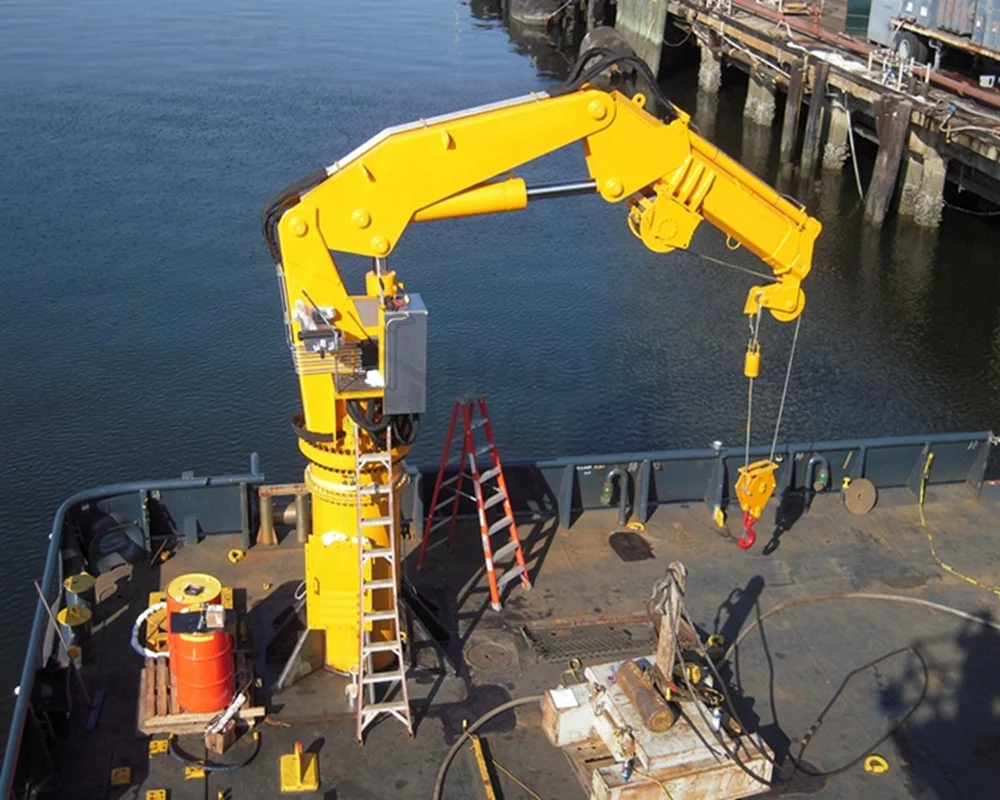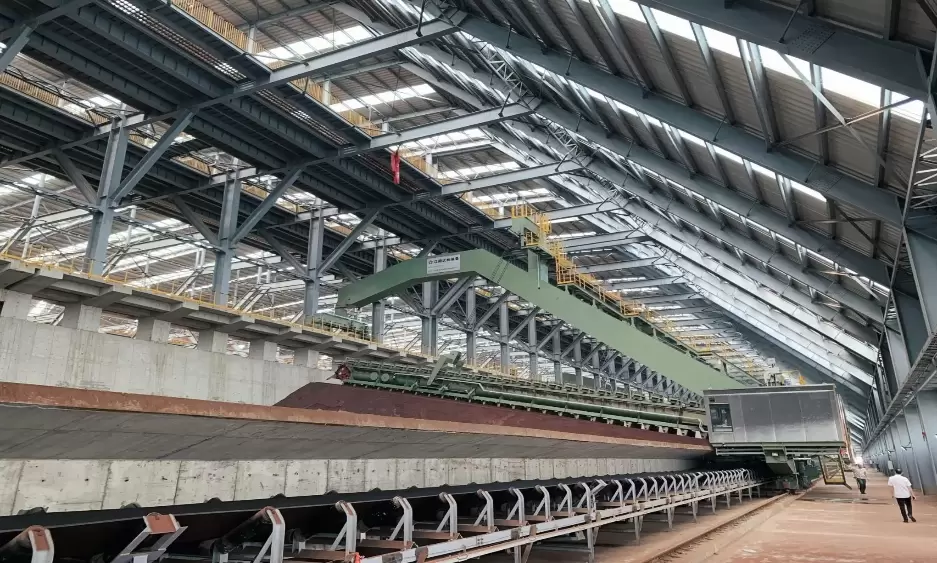Application of ship deck cranes in port loading and unloading operations

With the rapid development of global trade, the efficiency and safety of port loading and unloading operations have become crucial components of modern logistics systems. As a key piece of equipment for port operations, marine deck cranes play an irreplaceable role in port cargo loading and unloading. This article will examine in detail the important applications of marine deck cranes in port operations, including their types, operating principles, application advantages, and practical cases.
1. Overview of Marine Deck Cranes
As the name suggests, marine deck cranes are lifting equipment installed on the deck of a ship, primarily used for cargo loading and unloading at ports. Based on their function and purpose, marine deck cranes can be divided into the following categories:
General-purpose marine deck cranes: Suitable for loading and unloading bulk cargo, containers, and various general cargoes, they offer flexible operation and strong adaptability.
Hydraulic marine deck cranes: Driven by a hydraulic system, they enable precise operation and are suitable for demanding operating environments.
Electric marine deck cranes: Powered by electricity, they are environmentally friendly, energy-efficient, and quiet, making them suitable for use in ports and on ocean-going vessels.
Specialized cranes: Designed for specific cargo needs, such as tanker cranes and ore transport cranes. Each type of crane is designed with efficiency, safety, and durability in mind, meeting the operational requirements of different ports and vessels.
2. Working Principle of a Marine Deck Crane
The core components of a marine deck crane include a boom, hook, hydraulic or electric drive system, and control system. Its operation is primarily implemented through the following steps:
Cargo loading: The operator uses the hook to connect the cargo to the crane, ensuring it is securely positioned.
Boom operation: Based on the weight and location of the cargo, the boom is controlled to raise, lower, rotate, and extend to move the cargo from the ship's hold or shore platform to the target location.
Cargo unloading: The cargo is safely placed at the target location, while the control system monitors the crane's operating status to ensure operational safety.
Automated control: Some high-end marine deck cranes are equipped with intelligent control systems that enable automatic lifting, precise positioning, and collision avoidance, significantly improving operational efficiency.

3. Advantages of Marine Deck Cranes in Port Loading and Unloading Operations
Marine deck cranes offer significant advantages in port loading and unloading operations, as follows:
Improved Operational Efficiency: Port loading and unloading operations typically involve the rapid loading and unloading of large quantities of cargo, making traditional manual or small mechanical equipment inefficient. Marine deck cranes can handle large cargo volumes in a short period of time, significantly improving port operational efficiency. For example, in modern container ports, each marine deck crane can handle the loading and unloading of hundreds of standard containers daily.
Improved Operational Safety: Port operations, characterized by heavy cargo and complex operating environments, present significant safety risks. Marine deck cranes are equipped with multiple safety features, such as overload protection, position limit controls, anti-tipping devices, and emergency braking systems, effectively reducing the incidence of operational accidents.
Adaptable to Various Cargo Types: Marine deck cranes can flexibly adapt to various loading and unloading requirements, including bulk cargo, containers, liquid cargo, and specialty cargo. By changing the spreader or adjusting the operating mode, they can meet the diverse cargo handling requirements of ports.
Reduced Labor Costs: Traditional port loading and unloading operations are highly labor-intensive and rely heavily on manual labor. Marine deck cranes can replace a significant amount of manual labor, reducing labor costs and mitigating the risk of human error.
4. Applications
Bulk Port Operations: In bulk port operations, marine deck cranes can quickly handle bulk cargo such as coal, ore, and grain. Equipped with grab or bucket spreaders, they efficiently complete loading and unloading operations and minimize cargo loss.
Container Port Operations: In container ports, marine deck cranes can be used with automated operating systems to handle container handling, reducing operation time and improving container turnover. Modern container ships are often equipped with multiple cranes for simultaneous multi-point operations.
Liquid and Hazardous Goods Loading and Unloading: Marine deck cranes can be used with specialized spreaders to load and unload liquid chemicals, oil, and other hazardous materials. High-precision operating systems and safety features ensure safe transport of hazardous materials.
Engineering Vessel Operations: In marine engineering and offshore operations, marine deck cranes are used for equipment lifting, component transportation, and platform construction. Their high load capacity and remote operation capabilities enable efficient operation in complex offshore environments. Marine deck cranes play a vital role in port loading and unloading operations. Their efficiency, safety, and versatility make them indispensable equipment for modern port operations. With the continuous advancement of technology, intelligent, energy-efficient, and high-load capabilities will become the development trends of marine deck cranes, bringing higher efficiency, lower costs, and a safer operating environment to port loading and unloading operations. When selecting marine deck cranes, port companies should choose the appropriate model and configuration based on their operational needs and cargo types to achieve modern port operations.
As a professional marine deck crane manufacturer, HAOYO is committed to providing high-performance lifting solutions for global ports and ocean shipping. Leveraging advanced design concepts, sophisticated manufacturing processes, and comprehensive after-sales service, the company offers a variety of marine deck cranes suitable for different cargo types and operating environments. These cranes deliver efficient, safe, and reliable operation, providing a solid foundation for improving port efficiency and optimizing operating costs.
www.haoyotech.com
haoyotech

